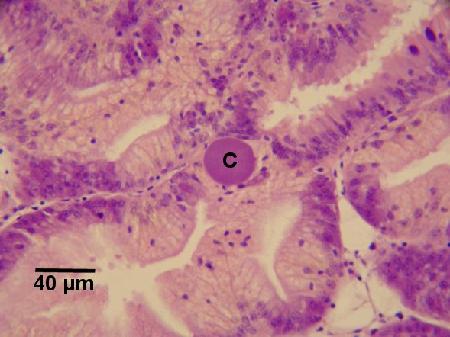Rickettsia-like and Chlamydia-like Organisms of Oysters
On this page
Category
Category 4 (Negligible Regulatory Significance in Canada)
Common, generally accepted names of the organism or disease agent
Rickettsia-like and Chlamydia-like organisms.
Scientific name or taxonomic affiliation
Intracellular organisms belonging to the Rickettsiales.
Geographic distribution
Ubiquitous.
Host species
All species of oysters examined to date (including: Crassostrea angulata, Crassostrea gigas, Crassostrea virginica, Ostrea edulis, Ostrea chilensis and Ostrea angasi) as well as a wide variety of other marine molluscs including mussels, clams, cockles and scallops.
Impact on the host
Microcolonies in the epithelial cells of the gills and digestive gland. Infections usually of light intensity and not associated with disease. The occurrence of pathology in the gills of Crassostrea gigas, with a heavy infection, suggests that gill functions could be compromized in some oysters. A Chlamydia-like organism was associated with visible gill lesions and occasional mortalities in C. gigas from the Atlantic French coast in 1992-1993 (Renault and Cochennec 1995).
Diagnostic techniques
Histology
Microcolonies in cytoplasm of epithelial cells. Infected cells may or may not be hypertrophied.

Figure 1. Microcolony of Rickettsia-like organisms (C), resembling a basophilic inclusion, in the cytoplasm of the digestive gland tubule epithelium of Ostrea chilensis from New Zealand. Image provided by Ben Diggles PhD, DigsFish Services, www.digsfish.com, ben@digsfish.com.
Methods of control
No known methods of prevention or control. Under normal growing conditions, most species are probably not pathogenic.
References
Comps, M. 1983. Infections rickettsiennes chez les mollusques bivalves des côtes francaise. Rapports et Procès-Verbaux des Réunions Conseil International pour l'Exploration de la Mer 182: 134-136. (In French).
Comps, M., J.P. Deltreil and C. Vago. 1979. Un microörganisme de type rickettsienne chez l'huître portugaise Crassostrea angulata Lmk. Comptes Rendus de l'Académie des Sciences Paris, Série D 289: 169-171. (In French).
Harshbarger, J.C., S.C. Chang and S.V. Otto. 1977. Chlamydiae (with phages), mycoplasmas, and rickettsia in Chesapeake Bay bivalves. Science 196: 666-668.
Heasman, M., B.K. Diggles, D. Hurwood, P. Mather, I. Pirozzi and S. Dworjanyn. 2004. Paving the way for continued rapid development of the flat (angasi) oyster (Ostrea angasi) farming industry in New South Wales. Final Report to the Department of Transport & Regional Services, Project No. NT002/0195 June 2004 NSW Fisheries Final Report Series No. 66. NSW Fisheries, Nelson Bay.
Renault, T. and N. Cochennec. 1994. Rickettsia-like organisms in the cytoplasm of gill epithelial cells of the Pacific oyster Crassostrea gigas. Journal of Invertebrate Pathology 64: 160-162.
Renault, T. and N. Cochennec. 1995. Chlamydia-like organisms in ctenidia and mantle cells of the Japanese oyster Crassostrea gigas from the French Atlantic coast. Diseases of Aquatic Organisms 23: 153-159.
Citation Information
Bower, S.M. (2006): Synopsis of Infectious Diseases and Parasites of Commercially Exploited Shellfish: Rickettsia-like and Chlamydia-like Organisms of Oysters.
Date last revised: December 2006
Comments to Susan Bower
- Date modified: